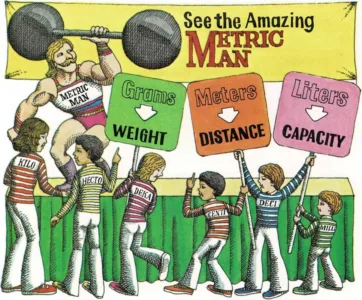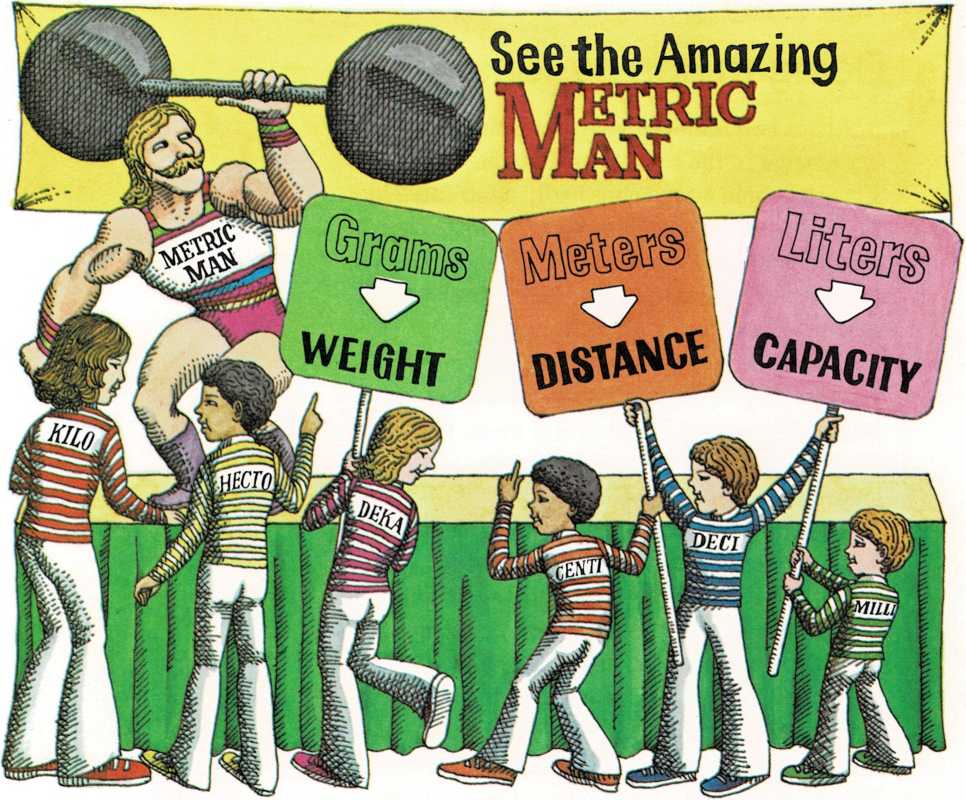
A meter is slightly longer than a yard, or just a little longer than
five Childcraft books placed flat, side by side. The word meter
comes from a Greek word that means “measure.” And it is from the word
meter that the new system, called the metric [(meht]{.smallcaps} rihk)
system, got its name.
The basic units for weight and capacity were worked out using the meter
as a standard. The basic unit used to measure weight is the gram
(grahm). The name comes from a word that means “small weight.” And a
gram is a small weight, for it takes 28 grams to equal one ounce.
The basic unit used to measure capacity, or the amount a container will
hold, is the liter
[(lee]{.smallcaps} tuhr). The name liter comes from an old Greek name
for a weight equal to twelve ounces. A liter is slightly more than a
quart.
In the English, or customary, system of measurement, there are lots of
different names and numbers to remember. But in the metric system there
are only a few names. And there is really only one number that’s
used—ten!
All the units in the metric system are based on ten. That is, meters,
grams, and liters are all changed to larger or smaller units simply by
multiplying or dividing by ten. This change is shown by a prefix. The
prefixes are:
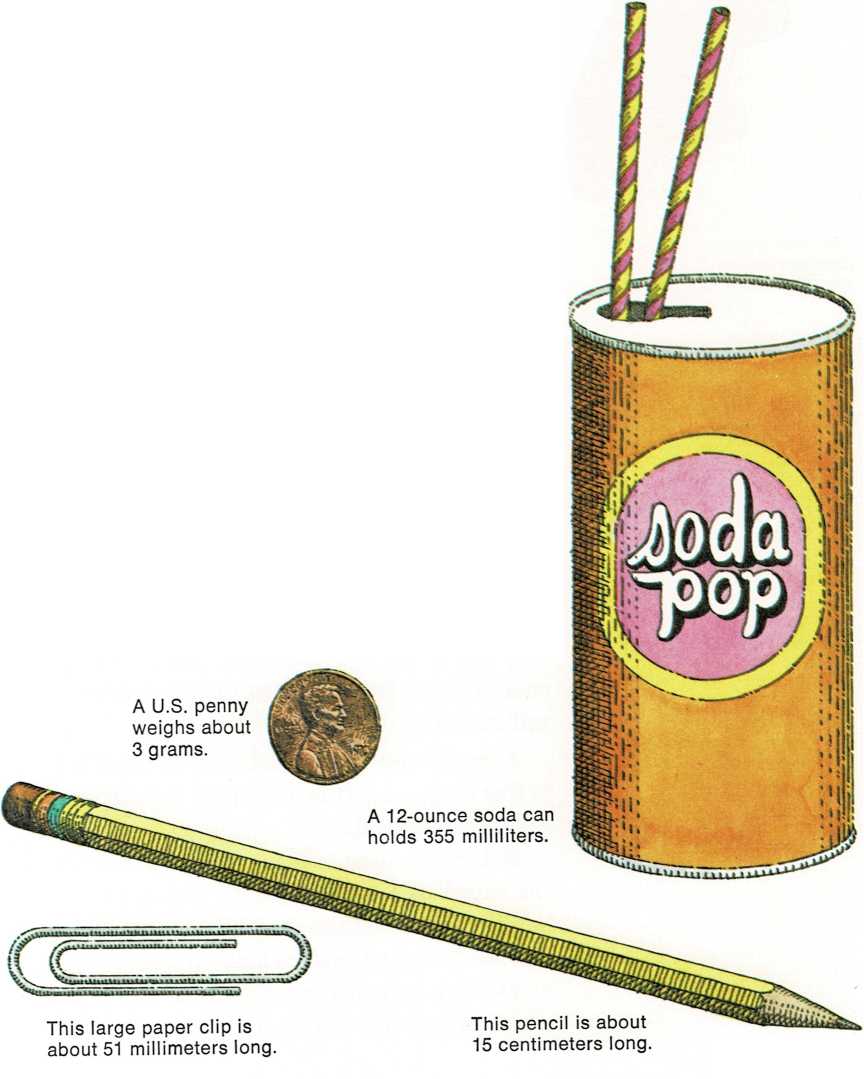
For Larger Units
Prefix Meaning
deka (dehk uh) 10
hecto (hehk tuh) 100
kilo (kihl uh) 1000
For Smaller Units
Prefix Meaning
deci (dehs uh) (one-tenth)
centi (sehntuh) (one-hundredth)
milli (mihl uh) (one-thousandth)
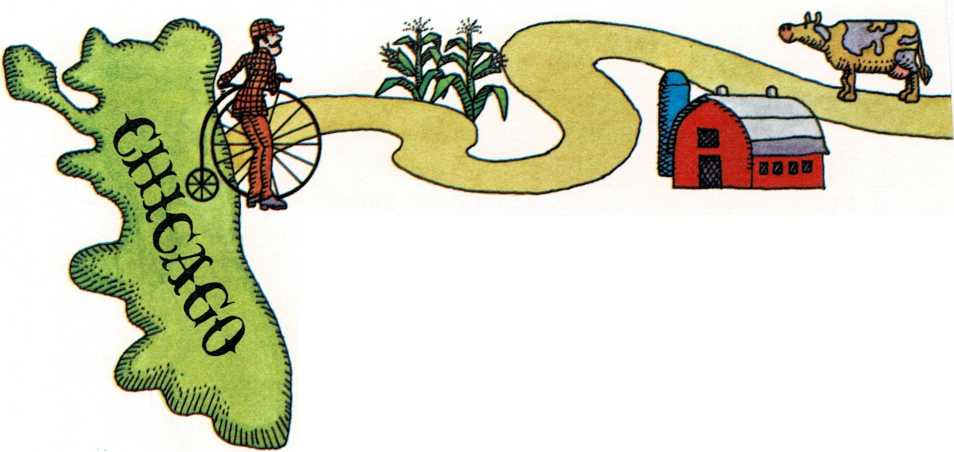
The road distance from Chicago to New York is about 1,290 kilometers.
For example, a de/cameter is 10 meters long, while a decimeter is only
meter long.
Do you see how easy it is to work things out in the metric system? In
the English system, to find out how many feet there are in 37 miles, you
first have to remember that there are 5,280 feet in a mile. Then you
have to sit down and multiply 5,280 by 37 to get 195,360—a hard job!
But to find out how many meters there are in 37 kilometers is no work at
all. The prefix kilo means 1,000, so the word kilometer means 1,000
meters. So, there must be 37,000 meters in 37 kilometers. Easy I
And to make things still easier, only a few of the units of measure in
the metric system are ever really used by most people. For example, only
four units are generally used to measure length or distance. These are:
millimeters, centimeters, meters, and kilometers.
A millimeter (one-thousandth of a meter) is only this long.. It’s useful
for measuring very small things. Some camera film is measured in
millimeters.
A centimeter (one-hundredth of a meter) is this long It is useful for
measuring
a book or a pencil.
Meters are used to measure everything from the length of a fossil
dinosaur skeleton to the height of a mountain. And kilometers, which are
one thousand meters long, are used for measuring long distances between
cities, or the distance from the Earth to the moon.
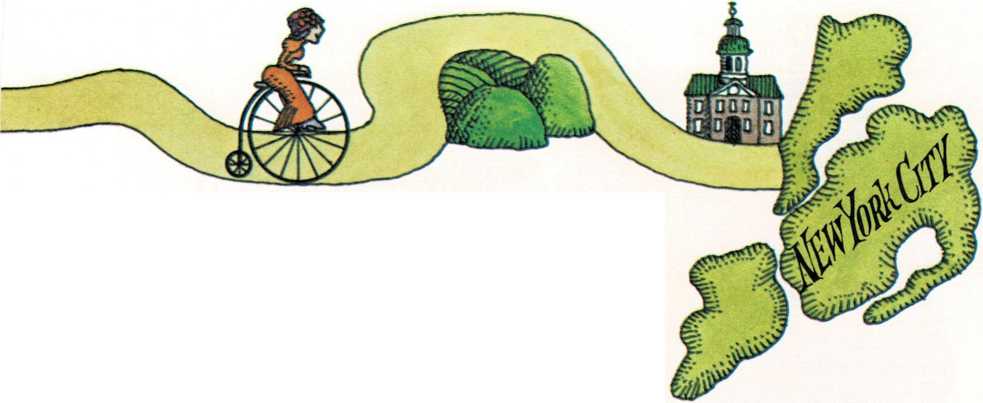
To measure weight, grams and kilograms are the only units generally
used. The weight of a candy bar is given in grams. A person’s weight is
given in kilograms.
To measure capacity, or amounts of things, milliliters and liters are
the only units generally used. A tube of toothpaste might hold 100 or
150 milliliters. A carton of milk might hold one, two, or three liters.
Once you become familiar with the metric system it is very easy to
use—much easier than the mixed-up English system. The metric system is
the best system for measuring things that anyone has worked out yet. It
may be the best system that can be worked out.
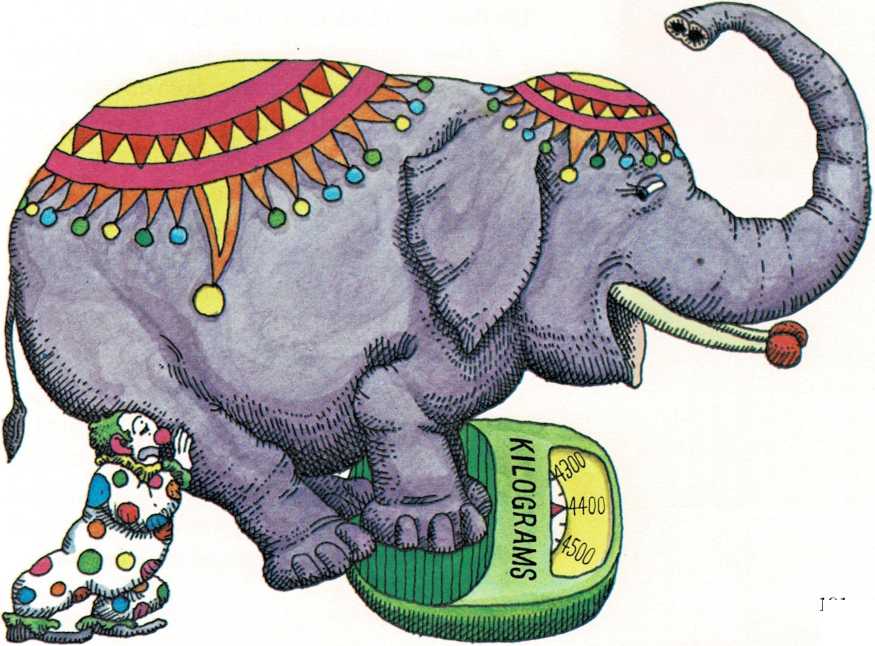
The average weight of a male Asian elephant is about 4,400 kilograms.

